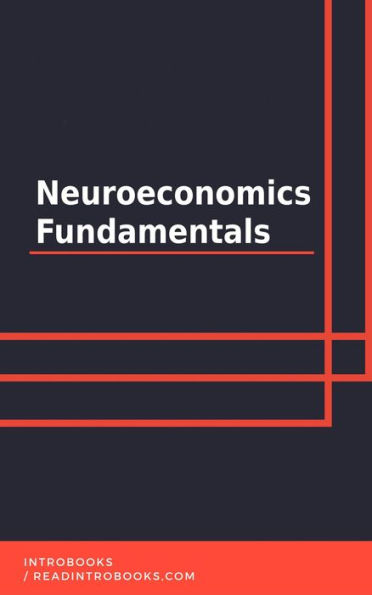The massive movement within Economics itself is largelyresponsible for the bridging that neuroeconomics provided foreconomics and psychology. Recent models in economics(Benhabib & Bisin 2005, Bernheim & Rangel 2004, Brocas &Carrillo 2006, Fudenberg & Levine 2006, Loewenstein &O'Donoghue 2004) have come to embrace a multiple systemsperspective, which has long been popular among psychologists(Chaiken & Trope 1999, Posner & Snyder 1975, Schiffrin &Schneider 1977). Although neu- roeconomics has not yet produced manyfindings that directly challenge assumptions held withinpsychology (only one of the neuroeconomics papers discussedabove, Shiv et al. 2005, was published in a psychology journal),the field will undoubtedly eventually focus on issues ofimportance to both fields. For example, psychologists have oftenquestioned how multiple systems interact to influence behavior.They may compete, or one system may provide a defaultresponse that can subsequently be overridden by anothersystem, hypotheses that Evans (2008) respectively refers to as"parallel-competitive" and "default-interventionist". Economistswho studied and tried to come up with an official model orframework that can efficiently highlight the interaction of morethan one systems are very much interested in this veryquestion. It is obvious that neuro economists would spare noopportunity in addressing this situation empirically sooner thanlater. Though majority of changes brought in by neuroeconomicswithin Economics in general were positive and very encouragingbut there had been certain reactions which were not veryencouraging and were considered more extreme following oneor two differently known pattern. This is undoubtedly beneficialto those economists and to the field.However,such viewsprobably should have been adopted much earlier based onbehavioral research. The overweighting of neural relative tobehavioral evidence is illustrated in the bibliographies of the fivenew economic models mentioned above. For example, only one cites Chaiken & Trope's (1999)well-known review of dual-process re- search, whereas citationsof neuroscientific studies abound. On the other hand, someeconomists, still reeling from the incorporation of psychologyinto economics and the rise of behavioral economics, are evenmore aghast at the infiltration of economics by neuroscience.They reject the new phrenology (Harrison 2005, p. 794) basedon the argument that neural data cannot refute economicmodels, which make predictions about behavior rather thanunderlying processes (Gul & Pesendorfer 2005).
The massive movement within Economics itself is largelyresponsible for the bridging that neuroeconomics provided foreconomics and psychology. Recent models in economics(Benhabib & Bisin 2005, Bernheim & Rangel 2004, Brocas &Carrillo 2006, Fudenberg & Levine 2006, Loewenstein &O'Donoghue 2004) have come to embrace a multiple systemsperspective, which has long been popular among psychologists(Chaiken & Trope 1999, Posner & Snyder 1975, Schiffrin &Schneider 1977). Although neu- roeconomics has not yet produced manyfindings that directly challenge assumptions held withinpsychology (only one of the neuroeconomics papers discussedabove, Shiv et al. 2005, was published in a psychology journal),the field will undoubtedly eventually focus on issues ofimportance to both fields. For example, psychologists have oftenquestioned how multiple systems interact to influence behavior.They may compete, or one system may provide a defaultresponse that can subsequently be overridden by anothersystem, hypotheses that Evans (2008) respectively refers to as"parallel-competitive" and "default-interventionist". Economistswho studied and tried to come up with an official model orframework that can efficiently highlight the interaction of morethan one systems are very much interested in this veryquestion. It is obvious that neuro economists would spare noopportunity in addressing this situation empirically sooner thanlater. Though majority of changes brought in by neuroeconomicswithin Economics in general were positive and very encouragingbut there had been certain reactions which were not veryencouraging and were considered more extreme following oneor two differently known pattern. This is undoubtedly beneficialto those economists and to the field.However,such viewsprobably should have been adopted much earlier based onbehavioral research. The overweighting of neural relative tobehavioral evidence is illustrated in the bibliographies of the fivenew economic models mentioned above. For example, only one cites Chaiken & Trope's (1999)well-known review of dual-process re- search, whereas citationsof neuroscientific studies abound. On the other hand, someeconomists, still reeling from the incorporation of psychologyinto economics and the rise of behavioral economics, are evenmore aghast at the infiltration of economics by neuroscience.They reject the new phrenology (Harrison 2005, p. 794) basedon the argument that neural data cannot refute economicmodels, which make predictions about behavior rather thanunderlying processes (Gul & Pesendorfer 2005).

Neuroeconomics Fundamentals

Neuroeconomics Fundamentals
Related collections and offers

Product Details
| BN ID: | 2940163594603 |
|---|---|
| Publisher: | IntroBooks |
| Publication date: | 11/21/2019 |
| Sold by: | Draft2Digital |
| Format: | eBook |
| File size: | 188 KB |
